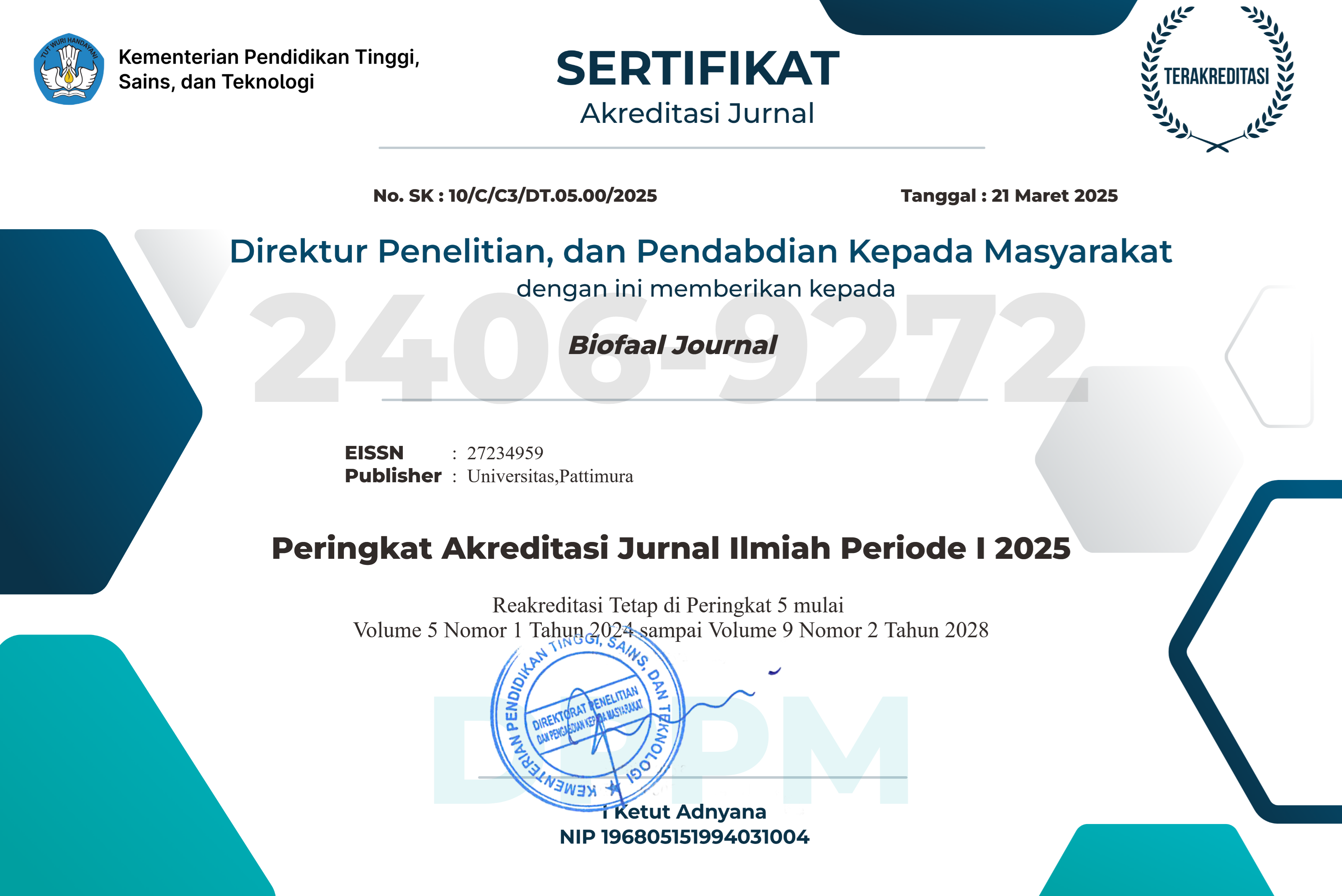ANTIBACTERIAL ACTIVITY EFFICACY OF EXTRACT SEAWEED Kappaphycus alvarezii AND LEAVES OF MANGROVE (Rhizophora apiculata) AGAINST Aeromonas hydrophilla CAUSES OF ICE-ICE DISEASE
Abstract
Southeast Maluku area, seaweed is the livelihood of the community. However, in its cultivation there are some common obstacles that are often experienced. One of them is ice-ice disease caused by the presence of bacteria such as Aeromonas hydrophilla. Therefore, prevention that can be used as a solution is antibacterial. One of the natural ingredients that can be used as an antibacterial is seaweed, because it contains compounds that can inhibit bacterial growth. In general, the most common bioactive compounds found are flavonoids, phenols, and tannins. In addition to seaweed, mangrove plants also have compounds that can be antibacterial. The extract method used in this study is a simple extraction method that uses only one type of solvent, namely distilled water. And a comparison of concentrations between 100%, 80%, 60% and 40% was carried out. Then the inhibition zone test was carried out using the paper disc diffusion method, where the disc paper was dipped into each extract with different concentrations and placed in a petri dish that had been overgrown with bacteria. Measurement of the inhibition zone formed was carried out after the plates were incubated for 24 hours at 37oC. The measurement results show that both aquades extracts have medium to strong inhibitory power. The conclusion of this research is that aquades extract of seaweed and mangrove leaves has inhibitory power against Aeromonas hydrophilla bacteria.
Downloads
Copyright (c) 2023 Hendro Hitijahubessy, Muniati Nur Aisyah Bandjar, Laury Marcia Ch. Huwae

This work is licensed under a Creative Commons Attribution-NonCommercial-ShareAlike 4.0 International License.
1. Author retain copyright and grant the journal right of first publication with the work simultaneously licensed under a creative commons attribution license that allow others to share the work within an acknowledgement of the work’s authorship and initial publication of this journal.
2. Authors are able to enter into separate, additional contractual arrangementfor the non-exclusive distribution of the journal’s published version of the work (e.g. acknowledgement of its initial publication in this journal).
3. Authors are permitted and encouraged to post their work online(e.g. in institutional repositories or on their websites) prior to and during the submission process, as it can lead to productive exchanges, as well as earlier and greater citation of published works.








